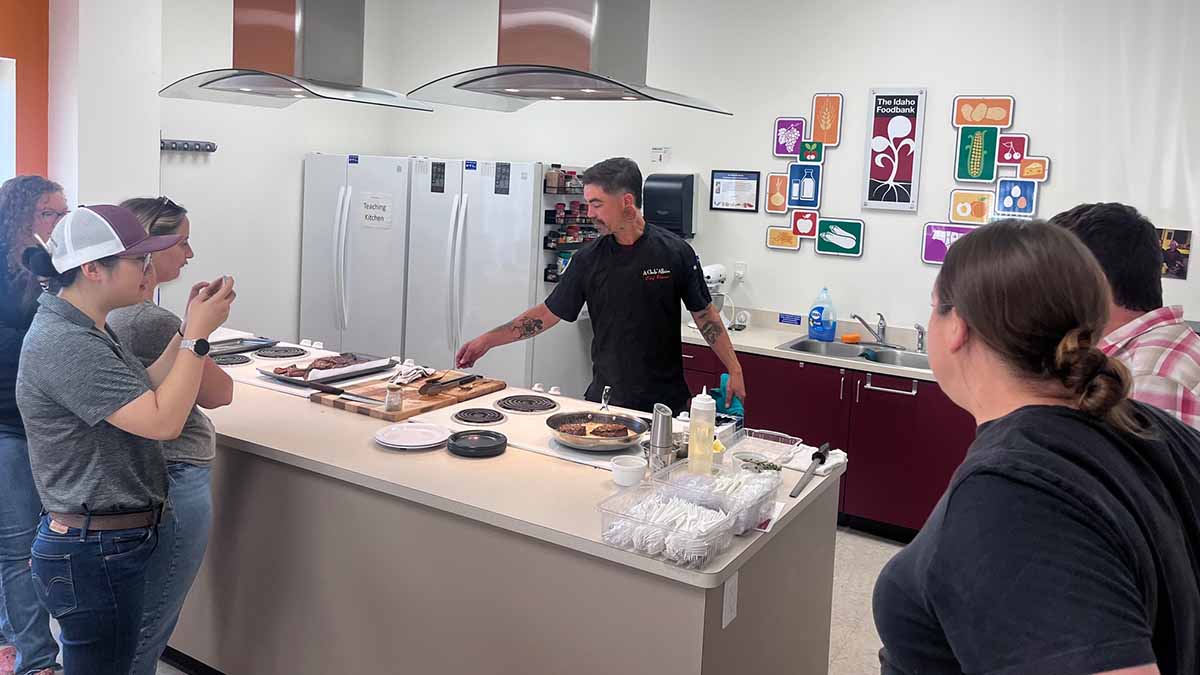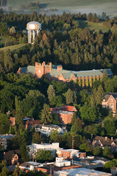Fighting Food Insecurity
August 13, 2025
Northern Idaho community food banks facing cuts to their federal assistance are turning to University of Idaho Extension to help feed local families in need.
At the request of the Bonner Community Food Center, staff at U of I’s Sandpoint Organic Agricultural Center (SOAC) have ventured into potato production this season and plan to expand next summer into other needed storage crops, including winter squash, cabbage and onions.
Furthermore, Extension educators Audra Cochran, Clearwater County; Jessie Van Buren, Latah County; and Meranda Small, Idaho County; are partnering with the state’s cattle producers to fill freezers at the Idaho Foodbank Lewiston Branch with beef. In northern Idaho, 14.7% of the population, including 21% of the region’s children, face food insecurity, according to Feeding America’s 2025 Map the Meal Gap report.
“Food insecurity really is an issue across the nation, but especially in Idaho and definitely in north Idaho,” Cochran said. “We’re all teaming up to help the food banks and our communities. We’re vested in our communities in a lot of ways.”
At SOAC, interns and market gardening instructors planted 600 pounds of potato seed in six rows within a 200-foot by 35-foot plot on June 20. The bed had already been prepped and fertilized when staff received the food center’s request.
Despite the late planting, Kyle Nagy, SOAC superintendent and orchard operations manager, is optimistic the facility’s first potato crop will yield up to a ton of spuds.
They will be using a potato hiller every week to remove weeds from between rows and pile dirt on top of potato plants. At season’s end, they’ll dig the spuds using an antique, tractor-pulled harvester, and volunteers from the food center will help fill storage bins. The local nonprofit organization Food for Our Children donated funds to buy the seed and install a drip irrigation system.
“We’re always looking for ways we can be helpful and impactful in our community, and when this opportunity came up, it was a no-brainer for us,” Nagy said. “We knew we had to help.”
Next season, Kendall Kahl, an Extension specialist in sustainable organic agriculture based at SOAC, anticipates tying research projects to storage crop production. For example, she has ongoing cover crop trials at the facility and could plant potatoes and other storage crops in beds following cover crops to assess soil health benefits. She’d also like to research storage crop management practices in an organic system.
“There’s a human benefit and also an educational benefit you can make from the same crop,” Kahl said. “I really hope to pair both of those things.”
Debbie Love, executive director of the food center, has seen a 53% increase in food demand in Bonner County during the past two years. The U.S. Department of Agriculture has historically supplied a quarter of her center’s food donations. However, Bonner, Kootenai and Boundary counties received a single truckload of lentils from the agency during June rather than deliveries of eight different shelf-stable and frozen commodities they’d been expecting. Love also received notice of the cancellation of four truckloads of meat the counties had been anticipating from USDA during July.
Her food center serves 3,200 families per month. In addition to SOAC, which has also supplied the center with up to 4,000 pounds of other produce annually from its market garden, Love said the community has stepped up its contributions recently. Love has started new food drives, including a Christmas in July donation event.
In July, Extension participated in an event at the Lewiston food bank in cooperation with the Idaho Beef Council’s Beef Counts program, Agri Beef and the Idaho Cattle Association. U of I’s meat science team broke down a beef sirloin into sub-primal cuts, educating UI Extension 4‑H Youth Development volunteer leaders and other stakeholders about where on the carcass specific meat products come from. A local chef gave a cooking demonstration featuring sirloin and described beef’s role in a healthy diet, and Cochran, Van Buren and Small labeled about 2,000 pounds of ground beef to be donated to the facility with the Beef Counts program logo. Through Beef Counts, the beef communities in Idaho and Washington have supplied more than 6.5 million servings of beef to people in need since 2010.
The Extension team also helped label ground beef for Beef Counts last year, in addition to hosting their own fundraisers in 2024 to supply cash and beef donations to the food bank.

About the University of Idaho
The University of Idaho, home of the Vandals, is Idaho’s land-grant, national research university. From its residential campus in Moscow, U of I serves the state of Idaho through educational centers in Boise, Coeur d’Alene and Idaho Falls, nine research and Extension centers, plus Extension offices in 42 counties. Home to more than 12,000 students statewide, U of I is a leader in student-centered learning and excels at interdisciplinary research, service to businesses and communities, and in advancing diversity, citizenship and global outreach. U of I competes in the Big Sky and Western Athletic conferences. Learn more at uidaho.edu.






